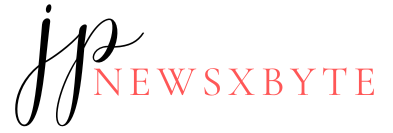Amid much criticism, discussions and backlash, United States President Donald Trump has responded to his post with an artificial intelligence generated image of himself as the Pope, calling it a joke.
Speaking to reporters on May 5, Donald Trump first said he didn’t know about the post, and later called it a joke, done in “fun”. The image was first posted to the official US White House social media accounts on May 2.
The AI-generated image showed Donald Trump dressed in white papal vestments. It was among two such images posted by the White House — the other being of the US president wielding one of the red light sabers preferred by villains in the ‘Star Wars’ movies, which was geared towards mobilising supporters and trolling critics.
What Did Donald Trump Say About AI Pope Image?
Trump told reporters on May 5 that the Pope image was posted as a joke on his Truth Social account, which was then reposted by the White House across social media. “I had nothing to do with it. It was just, somebody did it in fun. It’s fine. Have to have a little fun don’t you?” he said.
When further questioned about hurting the sentiments of Catholics, who are mourning the death of Pope Francis, Donald Trump was again dismissive.
“You mean they can’t take a joke?” he responded when told: “Some Catholics were not so happy about the image of you looking like the Pope”. He added, “You don’t mean the Catholics, you mean the fake news media. The Catholics loved it. I had nothing to do with it. Maybe it was AI.”
The White House did not respond to questions about who other than Donald Trump posts to his Truth Social account and who created the two memes.
What Do Experts Say? Funny or Not?
Throughout his political career, Trump has embraced bold visuals, from posing in a garbage truck to standing outside a church during protests against police brutality. But the experts told Reuters that unlike those rooted in reality, AI images blur fact and fiction in ways that can mislead.
“I think we are seeing a new phenomenon – the merging of social media and AI power, organized for political power and narrative dominance,” said John Wihbey, director of the AI-Media Strategies Lab at Northeastern University in Boston.
“He’s exploiting this uncharted territory,” Wihbey said. “I suspect politicians around the world will begin to use generative AI and social together in newfound ways.”
Trump told reporters on Monday that the pope image was posted as a joke on his Truth Social account, which was then reposted by the White House across social media.
“I had nothing to do with it,” Trump said. “It was just, somebody did it in fun. It’s fine. Have to have a little fun don’t you?”
The White House did not respond to questions about who other than Trump posts to his Truth Social account and who created the two memes.
For many Catholics in the United States, Italy and elsewhere, the image of Trump dressed as God’s representative on Earth was offensive.
Former Italian Prime Minister Matteo Renzi wrote on X: “This is an image that offends believers, insults institutions and shows that the leader of the global right enjoys being a clown.”
Democratic strategist Michael Ceraso viewed the White House’s posting of the AI images as a deliberate attempt to generate buzz.
“He’s the first influencer president,” Ceraso said of Trump, urging Democrats not to get caught up in whipped-up controversies.
Trump, he said, takes his cues from professional wrestling: “You can be the bad guy or the good guy as long as you are getting crowd reaction.”
Since becoming president, Trump has posted AI-generated images of a beachfront resort in war-ravaged Gaza and of himself as a king and as an Al Capone-type gangster.
Jennifer Mercieca, a presidential rhetoric scholar at Texas A&M University in College Station, Texas, argued Trump was seeking to project images of strength at a time when his presidential approval rating is dropping.
“Trump’s policies are unpopular, and his presidency is unpopular,” Mercieca said. “Within this context, Trump has created a visual fantasy of himself as a hero, attempting to persuade the nation (and the world) that he is, in fact, a hero.”
The most recent Reuters/Ipsos polling had Trump’s approval rating at 42% with 53% of respondents disapproving of him and showed concerns mounting among Americans over his economic and immigration policies. He peaked at 47% in the first days of his presidency.
Northeastern University’s Wihbey said a greater test of AI’s ability to warp political reality will come if Trump attempts to insert himself into more “photo-realistic” images that suggest historical events and scenes that did not occur.
(With inputs from Reuters)

